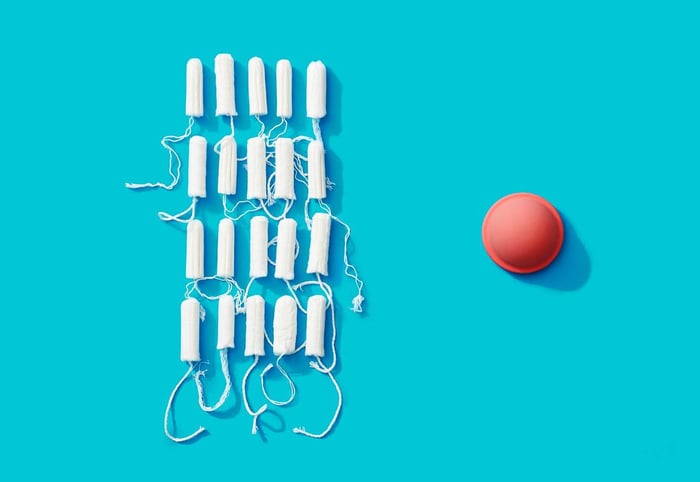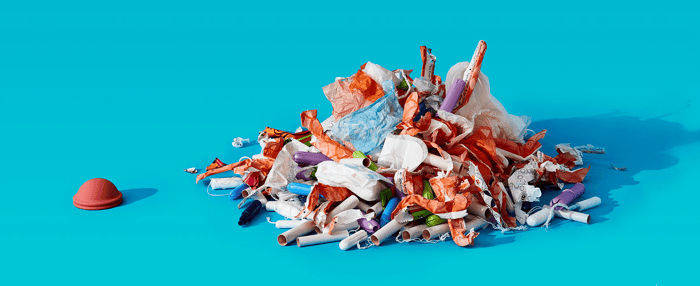Menstruators will have an average of 450 periods and could use up to 11,000 tampons in their lifetime. That is a lot of tampons for a product that we know so little about. At nixit, we want to provide straightforward period care and, as part of that, I wanted to provide more information on some conventional period products and how they affect the environment.
I decided to publish our first blog post on Earth Day due to the environmental impact that conventional products have. Little is done to make us aware of this (although this is changing) so here we are - trying to do our small part - on this very important day.
The truth about plastic periods
The statistics speak for themselves. There are up to 4 plastic bags worth of plastic in a packet of sanitary towels. Sanitary towels themselves are made of up to 90% plastic and even tampons contain up to 10%. Tampon applicators are now the 5th most common source of waste washing up on UK beaches.
I’m not writing this down to make anyone feel guilty - until I started to do some research, I just didn’t know these facts and I think we need all need to make informed decisions for ourselves. We have all been made aware of the impact of single use plastics and, unfortunately, conventional menstrual products are just that.
What else is in tampons and pads?
Tampons are generally made from a mixture of cotton, rayon, wood pulp or synthetic substances and pads are made from wood pulp (and plastic). As tampons and pads come into contact with human waste, they cannot be recycled and go to landfill. It’s estimated that in North America alone, 20 billion tampons, pads and applicators end up in landfill annually and, as they all contain plastic, they will take longer than your lifetime to biodegrade - between 500 to 800 years.
Tampon manufacturers aren’t required to disclose what is in them, but we do know that pesticides and fertilizers are used on cotton when it is being grown. To make the cotton white, bleach will often be used. A bi-product of this is dioxin, a known carcinogen (although the FDA has said that the dioxin levels in tampons are safe).
Tampon cords are glued in (rather than woven) and tampons will also include chlorine, glyphosate (an ingredient in the weed killer RoundUp), polyethylene (PET) and polypropylene.
Do you flush?
I’ll admit it. I was a flusher. I was told that it was fine to flush tampons unless you were somewhere with a septic tank and so I did. As it turns out, half of all menstruators flush their tampons too. Every single day in the UK, about 2.5 million tampons, 1.4 million sanitary napkins and 700,000 panty liners are flushed down the toilet. These can end up contaminating waterways and, even if they do make it to a sewage plant, they will then go to landfill or be incinerated.
Ok, but what about making the best choice for my body?
The vagina is one of the most absorbent parts of the female body - it can absorb chemicals up to 10 to 80 times faster than when you take them orally! Remember that bi-product dioxin that we mentioned earlier? Well, that is being absorbed, along with everything else that is in the tampon.
Tampons are also absorbent themselves. This means that they absorb all moisture around them, not just your period. Everyone knows that feeling of pulling out a tampon when they’ve miscalculated what absorbency they need - that feeling of dry cotton against a dry vagina isn’t a pleasant one! That dryness can also lead to tiny tears in the vaginal lining, making some more prone to UTIs and can also upset your PH balance.
I use organic applicator free tampons, isn’t that better?
Applicator free tampons certainly reduce the waste of plastic applicators although if you are trying to reduce your plastic waste, we would recommend looking at how the tampons themselves are packaged. The tampons themselves will still go to landfill (as long as we remember not to flush).
What are my other options?
There are so many great products out there. Reusable pads are a sustainable swap for conventional pads, as well as period underwear - underwear that contains an absorbent lining to function like a pad.
Of course we love using our nixit menstrual disc but there are a lot of menstrual cup options out there. The main benefit to using a menstrual cup is that they will last you for years and, as they are made of silicone they do not absorb, but rather collect, your flow.
For years, we have been taught that periods are not something to shout about, and that we should quietly get on with them and go about our daily business as if nothing is different. This has fueled the use of conventional period products like tampons and pads.
You can insert and remove a tampon without having to look at your blood or touch yourself. A lack of open conversation has meant that we are using products that we just don’t know enough about.
Everyone must decide for themselves as to what product is best for them, and there will be a variety of reasons behind each individual’s personal choice. We want to empower you to make the best choice for you, whatever that choice may be.





